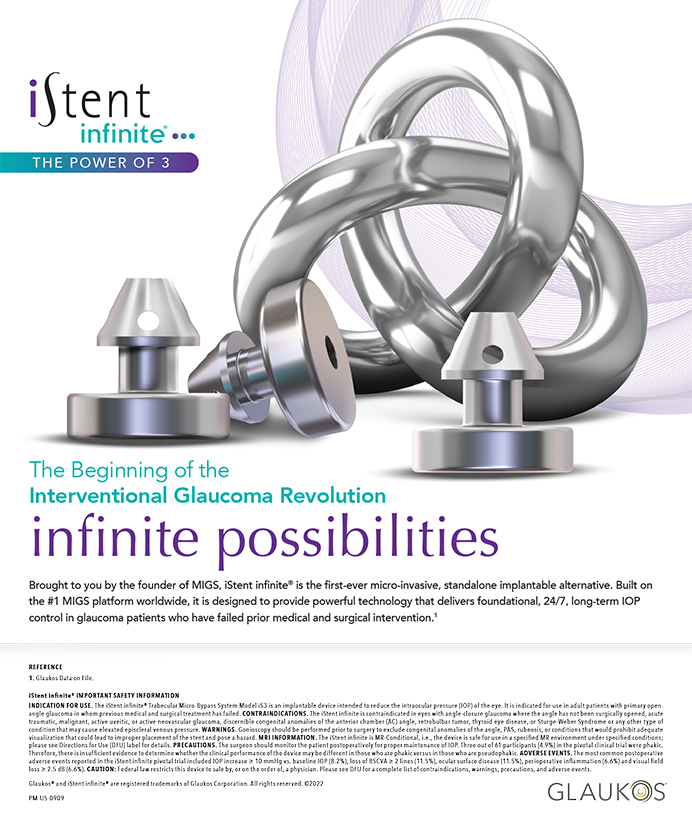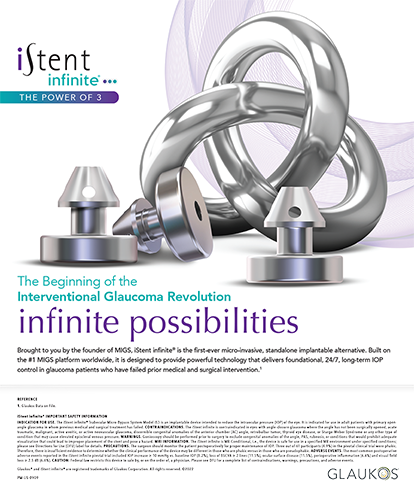
This issue of CRST focuses on rebuilding more than 2 years into the COVID-19 pandemic by considering the implementation of new approaches to patient care that lockdowns and other health-related restrictions brought to light.
Ophthalmology—and medicine in general—is ripe for change. Far more medical and surgical technologies are available today than ever before to help us better care for patients. The actual day-to-day practice of ophthalmology, however, hasn’t changed much during the past century. The same in-office; one-patient-at-a-time; labor-, staff-, and equipment-intensive eye exam is done today that ophthalmologists have done for generations. It may seem like there is no alternative to this tried-and-true convention, but history has proven time and time again that disruption and reinvention define progress.
The pandemic has demonstrated many opportunities to enhance efficiency in patient care, and necessity has driven creative minds to adopt new approaches in recent years. By now, most of us have embraced and built upon the changes the pandemic brought about. For example, many practices now perform preoperative workups and pupillary dilation in the same room instead of moving patients between rooms, thereby reducing the use of waiting rooms and patient wait times. Others use telemedicine to facilitate certain aspects of the patient journey, such as surgical counseling and postoperative visits. Digital communications with patients both pre- and postoperatively have streamlined operations and automated processes in many practices.
A further and more disruptive overhaul of our approach to patient care requires investment from industry. New technologies that automate more of the patient examination must be developed. Some modern devices already incorporate multiple functions. An example is newer-generation biometers that also perform pupillometry, keratometry, and basic retinal imaging. More development, however, is needed to streamline the preoperative examination process and reduce the time and staff it takes to acquire accurate and thorough diagnostic testing in the office.
The availability of at-home patient screenings for visual acuity, refraction, and even general ocular imaging—shared electronically with HIPAA-compliant software—would help to reduce patients’ time in the practice. I can imagine a future in which most or all of the testing performed during a typical eye examination or surgical consultation could be completed independently by patients via an automated workstation located in their local grocery stores or pharmacies. Is it that outlandish to think that a person could position themselves in an automated, slit-lamp–style device that can capture the refraction, pupillometry, IOP, 3D digital slit-lamp video, corneal maps, retinal OCT scans, visual fields, and fundus and optic nerve images? AI software could be developed to scrub the data and strategically refer people to the most appropriate specialist(s). A remote vision automation suite such as this could save practices time and money, ease the burden on health care workers, and improve public health by identifying disease states earlier and more often given its easy accessibility compared to scheduling an ophthalmology appointment.
A reworking of practice efficiency is overdue. It can help alleviate the staffing shortages being experienced by practices worldwide and the exploding demographic of aging patients, enhance patient care, and ultimately allow us to treat more patients. This will become more important as the population continues to age and the number of practicing ophthalmologists declines.
We need to partner with industry to develop technologies that provide opportunities for ophthalmology practices to streamline the preoperative workup and for patients to complete certain parts of the exam even before they step foot inside the practice. Managing the increase in patients in the years to come is one of the greatest challenges facing ophthalmology. I am confident that we can accomplish this goal if we adopt a collaborative and collective mindset and embrace change.
Robert J. Weinstock, MD
Chief Medical Editor




